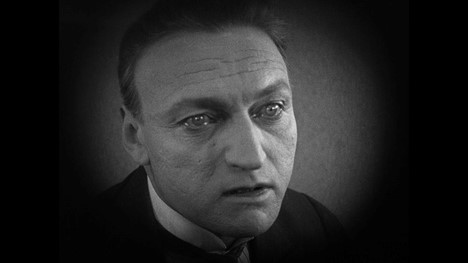Master of the House (1925)
Carl Theodor Dreyer's "Master of the House"
When most people think of Carl Theodor Dreyer, they usually think of his 1928 masterpiece "The Passion of Joan of Arc." However, it is also important to think about what led to this stunning achievement. It is obvious that the French production studios gave him creative license to make such a stunningly creative piece of work. But before he set out to France to make such a production, he utilized some creative techniques with a small Danish film that came three years prior, "Master of the House." In fact, it was this film that caught the attention of the French market which allowed for such an accomplishment.
"Master of the House" is a simple domestic comedy. It takes place in one apartment loft with a father, his wife, and their three children. Right from the beginning, the father is very tyrannical. He expects to have his food ready when he sits down, he berates the mother, and mistreats his children. Dreyer emphasizes the role that the mother plays through the various house tasks she undertakes. Dreyer shows these tasks through a series of close-ups and spends ample time to demonstrate the consistency with which she works. One day, the family's nanny urges the mother to leave so that she may teach the husband a lesson. After the mother departs, the nanny begins to set the house in order by making the father take part in the daily responsibility of domestic chores. Throughout the film, the husband begins to understand just how draining and taxing such chores are. Not only this, but he also begins to gain a perspective on just how tyrannical and oppressive he is to the rest of his family. At the end of the film, the mother reunites with her family and order is once again established.
The main theme presented in the film is the recognition and respect for the women of domestic life, their sacrifice, and their resolve. Dreyer demonstrates how difficult and tiring it is to maintain a full household, despite the men having to go into a physical job location. Through the film, a great appreciation is granted to the female role in a living arrangement.
With "Master the of the House," Dreyer was able to continue in his particular style of filmmaking. To achieve the domesticity of the film, Dreyer needed to be able to film up-close and personal with his actors and from varying degrees of angles. To achieve this, the set had to be constructed so that the walls could be removed. With this, Dreyer was able to place his camera anywhere in the frame at any position. One of the most important elements of Dreyer's style is his close-ups on faces. To truly capture the complex change in the characters throughout the story, Dreyer filmed many close-ups and allowed his actors to act with more internal emoting, as opposed to external animation. The result caught the attention of the French filmmaking audience, who became obsessed with his style.
"Master of the House" was considered such a uniquely successful artistic expression in France, they invited Dreyer to come and make their Joan of Arc story. His ability to express more with less, using close-ups and intimate shot editing further cemented his unique cinematic vision.




Comments
Post a Comment